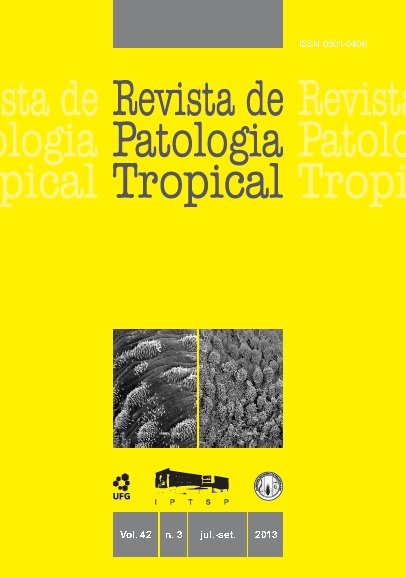HEPATITIS C: GEOGRAPHICAL DIVERSITY AND TEMPORAL TRENDS OF SEROPOSITIVITY IN BRAZILIAN BLOOD DONORS FROM MINAS GERAIS STATE, BRAZIL
DOI:
https://doi.org/10.5216/rpt.v42i3.26927Keywords:
HCV, Prevalence, Epidemiology, Blood donors, BrazilAbstract
Introduction: Hepatitis C virus (HCV) is transmissible through blood products and is a public health problem in Brazil. Monitoring blood donors may help to understand its trends in the general population. The evolution of HCV antibody prevalence in blood donors from Minas Gerais, south-eastern Brazil, and its distribution in first-time donors are shown. Methodology: From 1993 to 2007, 3,249,944 blood donors were screened for HCV-Ab with ELISAs. Results: Of the donors tested, 8,107 were reactive for HCV-Ab (0.25% CI=0.2441-0.2549). The total prevalence decreased from a maximum of 0.91% in 1993 to 0.098% in 2007. Among 1,283,970 first-time donors in the 2003 to 2007 period, there were 1,792 (0.51%) reactive for HCV-Ab. The cities of Sete Lagoas and Passos had the highest prevalence (0.76%), followed by Uberaba (0.62%) and Belo Horizonte (0.60%). Betim, Diamantina and Ituiutaba had the lowest rates (< 0.4%). Discussion: The decrease in the prevalence of HCV-Ab in blood donors may be due to improved tests, better donor selection and deferral of the repeat donors. The asymmetrical distribution may reflect different profiles of exposure to HCV and may help elicit public health measures that, in turn, will help foster a safer donor population.Downloads
Downloads
How to Cite
Issue
Section
License
The manuscript submission must be accompanied by a letter signed by all authors stating the full name and email address, confirming that the material has not been published or is under consideration for publication elsewhere, and agreeing to transfer copyright in all media and formats for Journal of Tropical Pathology. The authors will not be paid for published articles. They are solely responsible for the content of those articles, even if the Editor holds the right to adjust them to the norms of the journal.
The reviewers will not be paid for the peer review process.

